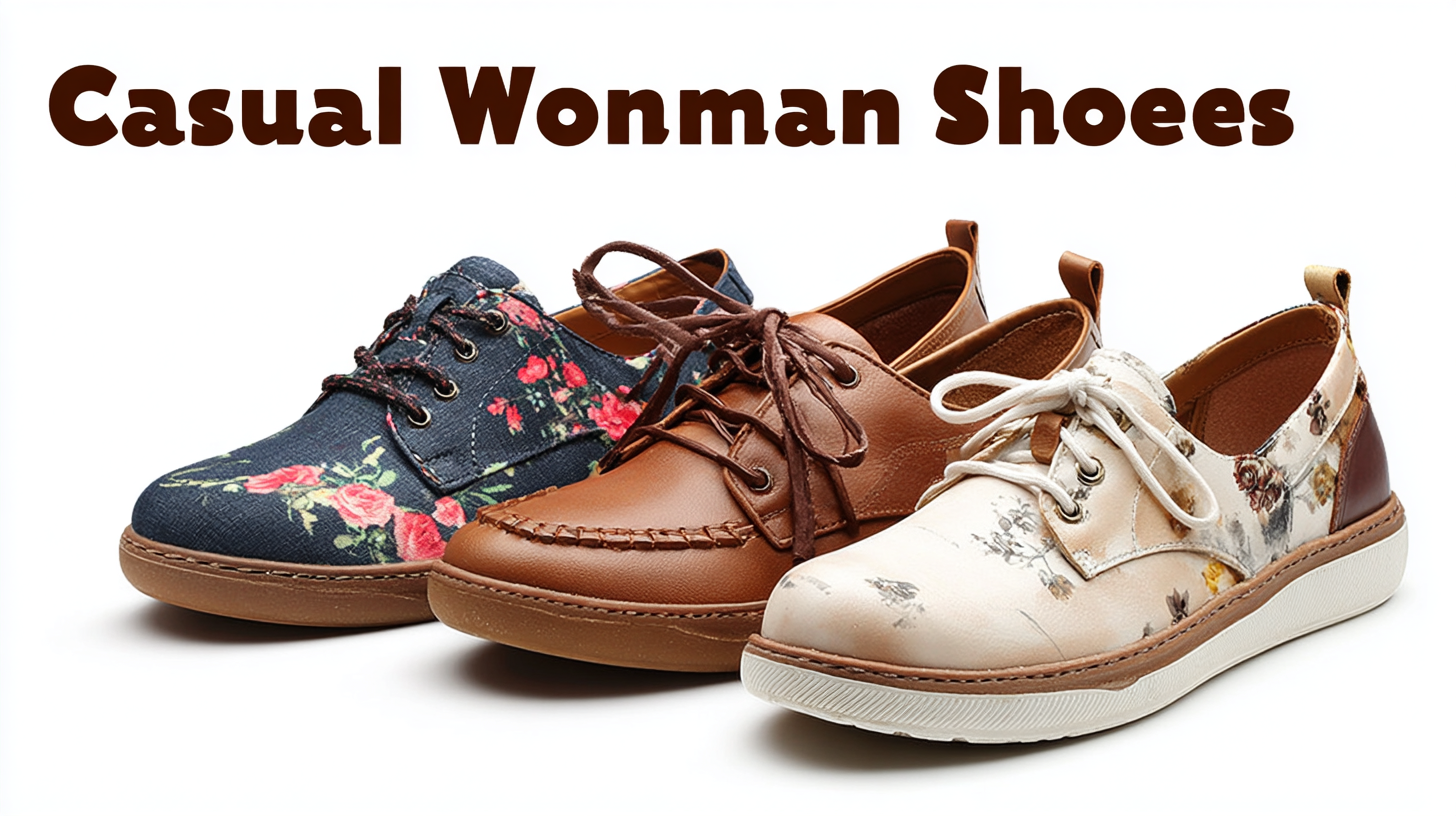
In recent years, the global footwear market has witnessed a remarkable surge, particularly in the casual shoes women segment, which is projected to reach USD 100 billion by 2025, according to industry reports. This growth is influenced by a shift in consumer preferences towards comfort and versatility in everyday wear. A survey conducted by Grand View Research highlighted that 70% of women prioritize comfort over brand when selecting casual footwear, underscoring the essential role of casual shoes women play in modern lifestyles. Furthermore, the rise of e-commerce has facilitated access to a broader range of styles and sizes, making casual shoes an indispensable item for women across the globe. As such, understanding the nuances of this sector, including materials, design trends, and consumer behavior, is crucial for both manufacturers and retailers aiming to thrive in this dynamic market.

The global demand for casual shoes among women has been steadily rising, reflecting a shift in lifestyle preferences and fashion trends. More women are prioritizing comfort and versatility in their footwear choices, moving away from traditional high heels to more relaxed styles. This change is not just a fleeting trend; it is indicative of a broader movement towards a balanced lifestyle that values both aesthetics and practicality. As daily routines become more dynamic, the need for stylish yet comfortable footwear has become essential.
Markets around the world are responding to this growing demand with innovative designs and sustainable practices. Brands are now prioritizing not only comfort and style but also eco-friendly materials that attract conscious consumers. This focus on sustainability resonates with many women who want to make ethical choices in their purchases, further fueling the popularity of casual shoes. As a result, manufacturers are increasingly expanding their offerings to cater to this diverse and evolving demographic, ensuring that every woman can find the perfect pair that meets her needs and reflects her personal style.
This bar chart illustrates the increasing global demand for casual shoes among women from 2018 to 2023, indicating a significant growth trend in this category with projections reaching approximately 500 million by 2023.
The global casual footwear market has shown significant growth, with women’s casual shoes playing an essential role in this trend. A recent report by Statista highlights that the global footwear market is projected to reach approximately $460 billion by 2025, with women's shoes comprising a substantial share of this revenue. Specifically, casual shoes for women are expected to witness a CAGR of 5.5% over the next few years, underscoring their increasing importance among global buyers.

Regional preferences further emphasize the necessity of focusing on women’s casual footwear. According to a survey conducted by Grand View Research, North America holds a leading position, with 30% of female consumers citing comfort as their primary reason for purchasing casual shoes. In contrast, Asian markets exhibit a preference for trendy designs, with nearly 45% of respondents in a Pizzazz Trends report indicating that style is their top priority. This divergence in casual footwear preferences across regions highlights the need for brands to tailor their offerings to meet varied consumer demands and preferences effectively.
In 2023, women's casual shoes have evolved significantly, reflecting both style and functionality tailored for global buyers. A comparative analysis of the best casual shoe brands reveals that companies like Nike, Adidas, and Skechers continue to lead the market by blending comfort and contemporary design. Nike’s innovative Air technology provides unparalleled support and durability, making it a favored choice for many. On the other hand, Adidas thrives with its sustainable practices, utilizing recycled materials which has appealed to the eco-conscious consumers. Skechers, known for its memory foam technology, ensures all-day comfort, perfect for women on the go.
Additionally, the rise of online shopping has transformed the casual shoe market. With platforms like Amazon and Zappos, consumers can easily compare prices and read reviews, driving brands to enhance their offerings continuously. This competition has led to more diverse designs, catering to various styles and preferences, from minimalist to vibrant prints. The adaptability of brands to meet the changing demands highlights the importance of casual shoes as essential footwear in women's wardrobes today. The statistics demonstrate that these footwear choices not only enhance lifestyle but also contribute to overall well-being, emphasizing their essential status in global buying trends.
| Metric | Value | Percentage |
|---|---|---|
| Annual Global Sales of Women's Casual Shoes | $12 Billion | 20% |
| Increase in Online Purchases of Casual Shoes (2022-2023) | 40% | N/A |
| Percentage of Women Who Own 3+ Pairs of Casual Shoes | 65% | N/A |
| Average Spending on Casual Shoes per Woman per Year | $120 | N/A |
| Expected Growth Rate of Casual Shoe Market (2023-2025) | 5% | N/A |
| Proportion of Environmentally Friendly Casual Shoes Sold | 30% | N/A |
| Percentage of Casual Shoe Buyers Aged 18-34 | 45% | N/A |
In recent years, lifestyle changes have dramatically influenced women's casual shoe purchases, with a noticeable shift towards comfort and versatility. According to market insights, the lifestyle sneaker market is projected to reach USD 140.91 billion by 2034, with a robust compound annual growth rate (CAGR) of 5.48% from 2025 to 2034. This trend can be attributed to the growing popularity of athleisure and a rising preference for footwear that enhances daily activities, reflecting a broader lifestyle change where functionality meets fashion.
Survey results indicate that consumers are increasingly conscious of sustainability in fashion, prompting brands to adapt their offerings accordingly. Women are not only looking for stylish casual shoes that align with their active lifestyles but also demand products that respect environmental and social responsibilities. Moreover, the emergence of styles that prioritize comfort, such as cushioned walking and orthopedic shoes, has gained traction among buyers aiming to alleviate common foot and joint pains. As women embrace a more dynamic lifestyle, the importance of investing in quality casual footwear that supports both health and style cannot be understated.
The casual shoe market for women is increasingly driven by sustainability, reflecting a significant shift in consumer behavior. According to a report by the Sustainable Apparel Coalition, approximately 67% of consumers prioritize sustainability in their purchasing decisions. This preference has led leading brands to develop eco-friendly materials and production processes. For instance, a recent industry study revealed that footwear made from recycled materials can reduce carbon emissions by up to 30%, a factor that resonates deeply with environmentally conscious buyers.

Moreover, the Global Footwear Market Report indicates that the demand for sustainable casual shoes is projected to grow at a compound annual growth rate (CAGR) of 8.2% over the next five years. This growth is largely fueled by younger consumers, particularly millennials and Gen Z, who are more likely to support brands that align with their values. Companies that implement sustainable practices, such as using vegan materials or adopting a circular economy model, are not only appealing to this demographic but also enhancing their market competitiveness. As sustainability becomes a critical criterion for purchasing decisions, it is clear that best casual shoes for women must incorporate these practices to thrive in today's market.
